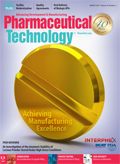Strategizing a Shortcut to Market
Drug type, potential sales, and ownership factor in the race to get drugs to market.
During the past 20 years, the overall median total time required by FDA to approve a new molecular entity (NME) new drug application (NDA) or biologic license application (BLA) dropped from 12 months in 1996 to 7.8 months in 2016 (1). In that same time, FDA’s Center for Drug Evaluation and Research (CDER) accelerated the median total approval time to approve a standard NDA or BLA from 17.8 months to 10.1 months. The median total approval time for priority review applications was relatively steady during those 20 years; however, the 2016 time of eight months was less than half of the 20.5 months required in 1993 (2).
While FDA has reduced approval times, a recent report by Quintiles-IMS (3) revealed other factors that may contribute to the time required to bring a drug to market. The study authors examined time trends for two segments of a drug product’s lifetime. The first segment--where those professionals involved in drug development have an impact--is the time from the patenting of a new drug molecule to the time it first reaches patients. The second segment--when the drug owner can recover its investment in the research and development of the drug product--is the time the molecule has exclusivity on the market thanks to patent or other protections.
The study was based on 667 innovative small- and large-molecule drugs launched in the United States between 1996 and 2015. More than 300 groups filed original patents that became the basis for the 667 drugs. Large Pharma accounted for 60% of new drugs; companies classified as mid pharma and small pharma each represented 20%. Oncology, orphan, biologic-based, and specialist-driven therapies all increased market shares during the time studied.
Patent to market
The filing of a patent is a business decision and can occur years in advance of, or close to, a launch date. The mean time from initial patent filing to launch for all molecules for the US market in the 20-year period was 12.8 years, the study reports, with an upper quartile of 16.3 years and lower quartile of 8.2 years.
The shortest time from patent to launch was 128 months in 1998; the longest was 211 months in 2008 when FDA approved fewer drugs (19) than any other year during the study. While some in industry attributed the drop to a more conservative approach by FDA following the withdrawal of Vioxx from the market in 2004, FDA cited a drop in new drug applications. Since 2008, the time from patent to launch has steadily declined to an average of 158 months for the five most recent years, a drop of four years or 25%. This increase in speed brings time to approval back to levels experienced in 1996-2000.
Organic growth speeds process?
An analysis of drug type showed that oncology drugs, on average, launched 34 months faster than other drug types. Drugs that achieved at least $1 billion in US sales by 2015 reached the market 27 months faster than drugs with lower sales.
The dynamic licensing, partnering, and acquisition nature of the bio/pharma industry, however, may be a greater factor in delaying the introduction of a new drug, the study suggests. Nearly three-quarters of the patented molecules were launched as drugs by a company that was different from the one that originally filed the patent. Those drugs launched by the same company that filed the original patent, however, took an average of 36 months less time to be launched than those that changed ownership, the authors reported. The transfer of a molecule from one company to another for development funding, technical expertise, or corporate strategy may ultimately get a drug to market. The path, however, may be longer than desired.
References
1. J. Jenkins, CDER New Drug Review: 2016 Update, Presentation, FDA/CMS Summit, Dec. 14, 2016.
2. FDA, NDA and BLA Approval Times, www.fda.gov/Drugs/DevelopmentApprovalProcess/HowDrugsareDevelopedandApproved/DrugandBiologicApprovalReports/NDAandBLAApprovalReports/ucm373415.htm accessed Feb. 13, 2017.
3. M. Aitken and M. Kleinrock, Lifetime Trends in Biopharmaceutical Innovation, QuintilesIMS Institute Report (Parsippany, NJ, January 2017).
Article Details
Pharmaceutical Technology
Vol. 41, No. 3
March 2017
Page: 12
Citation
When referring to this article, please cite it as R. Peters, “Strategizing a Shortcut to Market," Pharmaceutical Technology 41 (3) 2017.

Drug Solutions Podcast: A Closer Look at mRNA in Oncology and Vaccines
April 30th 2024In this episode fo the Drug Solutions Podcast, etherna’s vice-president of Technology and Innovation, Stefaan De Koker, discusses the merits and challenges of using mRNA as the foundation for therapeutics in oncology as well as for vaccines.
Drug Solutions Podcast: Gliding Through the Ins and Outs of the Pharma Supply Chain
November 14th 2023In this episode of the Drug Solutions podcast, Jill Murphy, former editor, speaks with Bourji Mourad, partnership director at ThermoSafe, about the supply chain in the pharmaceutical industry, specifically related to packaging, pharma air freight, and the pressure on suppliers with post-COVID-19 changes on delivery.
PacBio Chosen as Tech Partner for Global Alzheimer’s Disease Research Project
April 23rd 2025The project, the North African Dementia Registry, will unite multiple entities for the purpose of developing a comprehensive dataset to advance the research community’s understanding of Alzheimer’s disease and other dementias in diverse populations.